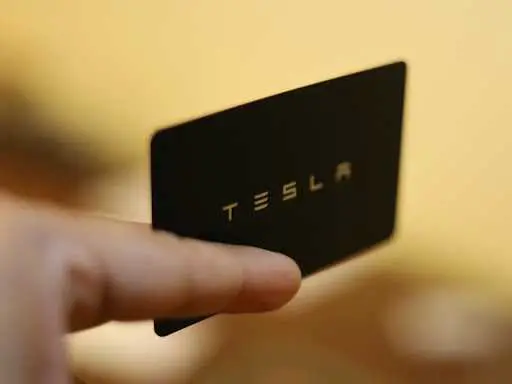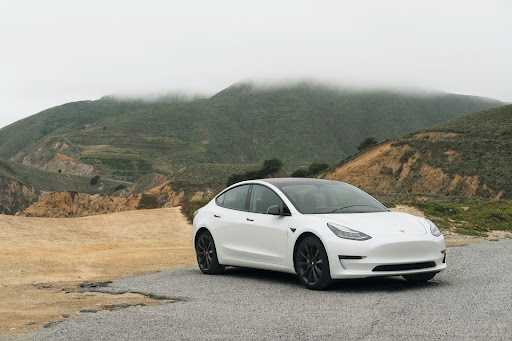What Happens If I Put Gas in a Tesla Car?
One of the significant concerns about electric cars is the range you can drive on one charge. A hybrid car that can run on both gas and electricity – or sometimes other fuels – can somehow solve this issue. So, some people have come up with the idea of putting gas into a Tesla car.
Nothing would happen if you put gas in a Tesla car – suppose you could put gas into it. Teslas are 100% electric cars and don’t have a fuel tank or somewhere else to put gas in them. Besides, gasoline is highly flammable, and its exposure to an electric vehicle can put you in a dangerous situation.
If you’re also curious to learn more about putting gas into a Tesla, read the rest of this article. We’ll tell you what fuel Tesla uses and whether you can put gas into it or not. We’ll also answer the question of what happens if you put gas into a Tesla car.
Is There Any Gas-Powered Tesla Car?
At the moment, there’s no gas-powered Tesla car, and probably there never will be. Tesla cars are purely electric, and unlike the hybrid vehicles, which are modified conventional cars, they’re made from scratch. That’s why they’re so popular. What’s more, Tesla offers a reasonably good range for an electric car and also provides numerous charging stations around the country.
It seems unlikely that Tesla ever changes its high-quality technology for hybrid cars or wastes time, energy, and money on such vehicles. It has established itself as a clean, safe, and environmentally friendly carmaker and won’t ruin its reputation while the whole world is moving toward clean energies.
Tesla’s Fuel
Teslas are all-electric cars which means their primary fuel is electricity. They get their required energy from high-capacity battery packs that come from a generating station. These batteries are rechargeable and have about 100kWh capacity, depending on the model and year.
Teslas don’t have an engine in the traditional sense. They come with an electric motor that doesn’t require gas or other conventional fuels like gasoline, diesel, etc., to work – in other words, they don’t work through combustion. Electric motors directly convert electricity into mechanical energy and then power the wheels.
Using Gas for Charging Up a Tesla Car
Obviously, you can’t put gas directly into a Tesla and expect it to move. Teslas don’t work this way. They run on the electricity their rechargeable batteries provide. However, you can use gasoline to charge a Tesla vehicle.
Yes, you heard it right. It’s completely feasible to use a gasoline-powered generator to generate the electricity required for charging up a Tesla car – and some people have done it before. You can use this method, for example, during power outages or when you run out of charge in a remote area. However, it’s not a fast and efficient charging method and would take a lot of time and you should save it only for emergencies.
What Will Happen When You Put Gas Into a Tesla
As mentioned above, Teslas are electric cars; thus, they don’t have any fuel tanks. As a result, it’s impossible to put gas into a Tesla car; there’s nowhere to pour the gas in. The charging outlet also isn’t that spacious to take much gas, and even if you succeed in filling it, it won’t get anywhere.
Besides, as Tesla is an electric vehicle with batteries and power cables, putting gas into it can be highly hazardous. Fuels like gasoline are highly flammable and can put you in a very dangerous situation. That’s why you should never experiment with putting gas in a Tesla to see what happens.
How Can You Charge a Tesla?
Tesla batteries are rechargeable, so you should plug them into a charging point after running out of charge – preferably before you completely run out of charge. This charging point can be at your home or somewhere in the city and on the roadsides.
Although you can directly plug your Tesla into a home outlet and use the mains for charging it up, it’s not quick and efficient. It would take a long time to charge your car fully. Alternatively, you could install a Tesla wall charger to speed up the process and save your time and energy.
It’s a charging unit that you can install on your garage or parking wall and directly connects to your home’s electrical infrastructure. Many Tesla owners use this method and plug their cars during the night to have a fully charged vehicle when they wake up in the morning.
But the fastest method for charging your Tesla car is using Tesla “Superchargers,” which are found all around the country and are rapidly growing in number. Most probably, you’ve seen them in parking lots or gas stations.
They’re very much similar to gas pumps but have a sleeker and more high-end look. These chargers are high-speed and efficient and can charge your car for driving about 200 miles in just around 15 minutes. So, whenever possible, it would be much better to take your Tesla to a supercharger and fuel it up in less than an hour.
Another method, although less common, is using the charging stations designed for other electric cars. To charge up your Tesla at an undedicated charging point, you should have an adaptor. However, this method isn’t as fast as the superchargers, and Tesla advises not to rely on 3rd party charging stations. That’s because of the difference in voltage that can cause issues with your car’s charge.
Does Tesla Have a Gas Backup?
Tesla doesn’t have any gas backups and only runs on batteries. While it’s possible to run out of battery, Tesla tries very hard to prevent this by warning you. for example, it warns you once you get out of the range of all charging points and shows the remaining battery charge.
Tesla is constantly improving its cars, and as you can see in the newer models, the range is also significantly increased. But you still may run out of battery while driving – very unlikely but possible. In this case, the only way to rescue your car is to call for a flatbed truck and take it to the nearest charging station.
However, Tesla does everything possible to prevent these situations. Some of its measures are as follows:
- Tesla will warn you if you get out of the range of all known charging points. You may know a new charging station that’s still unknown to the car. But, it would warn you anyway.
- When you’re heading to a destination and navigating to it on the Tesla’s main screen, the car tells you how many miles are remaining. Besides, if you get out of a supercharger on the road and your energy consumption is higher than expected, Tesla will direct you to the last supercharger on your route to charge further.
- If you’re low on the range while heading to a destination, Tesla will recommend that you reduce the speed to a specific amount to make sure you’ll reach the destination. It will also remind you of the speed reduction now and then and update the speed recommendation if needed.
- And finally, once your expected range gets below 10% remaining, the battery indicator will turn yellow and then red.
It’s a good idea to have your convenience charger and interchangeable ends with you if you’re heading to a distant destination. So, you can charge your Tesla at some RV parks or even at a regular outlet.
How Many Hours Can a Tesla Drive?
Tesla cars come in several models, and the company is enhancing their range over time to reduce the range anxiety and offer a more enjoyable driving experience.
Tesla cars’ range can vary between about 260 to almost 370 miles per full charge. The longest range recorded by a Tesla is 405 miles with a full charge. So, if you drive at 20mph, you can expect to drive for about 13 to 17 hours.
However, Tesla’s range depends on driving style, speed, weather, and other factors. Its range is still much better than the competitors.
While many people are concerned about Tesla’s range, there’s almost nothing to worry about. As mentioned, Tesla’s superchargers are numerous and now found everywhere, even between the states. Besides, if you note the car’s warnings and alarms, you’ll be able to reach the destination or to a charger point safely.
Conclusion
While many people wish Teslas were somewhat hybrid to enjoy a much further range, they’re not designed this way. Teslas are all-electric vehicles, and it’s impossible to put gas in them.
They don’t have a tank, and the only way to fuel them up is through a charge port. They have huge battery packs that can be recharged at home or at a supercharger station. What’s more, trying to put gas in a Tesla can be extremely dangerous because gasoline is flammable. So, it’s wise to avoid experimenting with gas on Tesla or pouring it into the charge port.
Amazon and the Amazon logo are trademarks of Amazon.com, Inc, or its affiliates.


